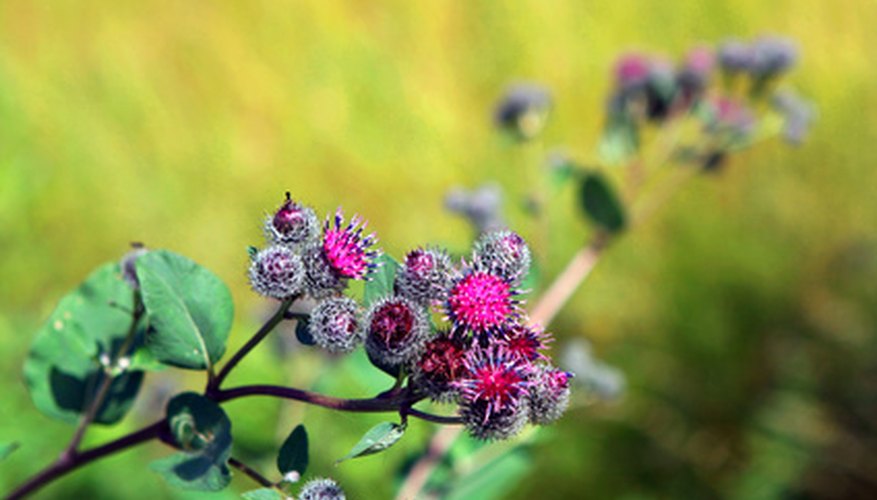Cultivated as a vegetable in Europe and Japan, and historically used for medicinal purposes, Burdock is classified as a weed in the United States. Related to daisies, it is a stout plant that grows 3 to 4 feet tall, although it can get as high as 10 feet, and creates burrs that stick to fur or clothing. Because the plants reproduce only by seed, they can easily be controlled with a variety of products for those that find it a nuisance.
Non-Selective Herbicides
Glyphosate is a broad-spectrum herbicide that will kill anything it touches and is available in many commercial products. Considered more "environmentally friendly" than other products, it can kill burdock within a few days. Labelled as moderately toxic, the chemical breaks down over a period of two weeks and usually does not enter the soil. It is not recommended for use in a garden or near other edible plants. Use care when applying to make sure that it does not come into contact with desired plantings.
- Glyphosate is a broad-spectrum herbicide that will kill anything it touches and is available in many commercial products.
- Considered more "environmentally friendly" than other products, it can kill burdock within a few days.
Pre-Emergent Herbicides
Pre-emergent herbicides such as mecoprop, dicamba or 2,4-D usually do no harm to existing plants but prohibit burdock from creating new growth and dropped seeds to germinate. To keep new seedlings from sprouting, adult burdock needs to be removed before the herbicide is applied. Young grass can be killed by this type of herbicide, however, so apply carefully.
Selective Herbicides
Selective herbicides are made for grassy or broad leaf plants such as burdock. When sprayed directly on burdock, the herbicide will kill only the burdock and not the grass around it. Dicamba is a commonly used herbicide in this class, as are imazapic and triclopyr.
Natural Herbicides
Pour a 4-percent bleach solution (such as for cleaning and laundry use) into a spray bottle. Using care to avoid eyes and clothing, spray the bleach directly at the base of the burdock plant, saturating the area. Bleach is made up of chloride, oxygen and sodium. As it breaks down, it will return to a common salt, which also kills plants.
- Pour a 4-percent bleach solution (such as for cleaning and laundry use) into a spray bottle.
- As it breaks down, it will return to a common salt, which also kills plants.
